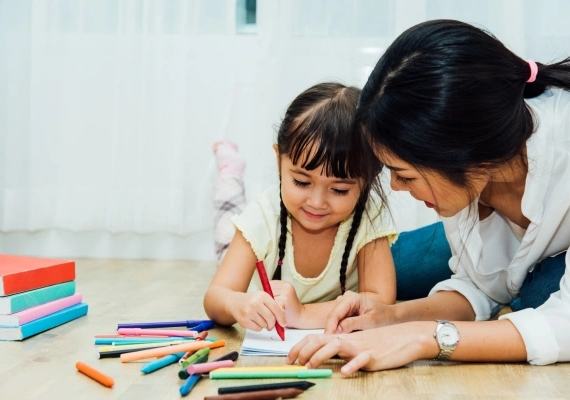Supportive Environment
Our Supportive Environment is designed to foster your child’s natural love of learning and inherent curiosity in our dynamic field of Q-Pulse. That’s why we’ve curated the following strategies that provide our students a safe space to grow and thrive.
Whether you’re a seasoned Q-Pulse practitioner or simply curious, these are essential for your child’s holistic development. When integrated within our Q-Pulse framework, they work together to guarantee a fulfilling and wholesome learning experience for our students.
Read on now to find out more about these two secret strategies that ONE Intervention uses to curate our very own Supportive Environment within our Centre.
Supportive Environment: Behaviour Management

At Q-Pulse, our Supportive Environment goes beyond just structured organisation. Our effective Behaviour Management elevates our students’ physical and emotional well-being. It aims to create a safe, positive learning space for your child to embrace growth.
Q-Pulse emphasises Behaviour Management through positive reinforcement, where desired behaviours are acknowledged and rewarded. Additionally, the programme integrates redirection strategies that guide our students towards more appropriate behaviours.
Through our expert staff’s gentle encouragement, our students develop positive social and emotional skills. Over time, this minimises frustration and promotes self-regulation.
The core of this programme encourages your child to express their emotions in a healthy manner – an extremely useful life skill for their future.
Supportive Environment: Prompts Hierarchy

Q-Pulse aims to develop a sense of accomplishment in your little ones, thus building their self-confidence. We do this through a Prompts Hierarchy in our Supportive Environment.
This strategy uses a scaffolded approach when teaching our students new skills. They are introduced to the skill and provided with different levels of support, which are gradually reduced as they learn how to master the skill.
For example, when first introduced to writing, a physical prompt (e.g. guiding the child’s hand) might be used. As the child progresses, this may be replaced with a verbal prompt (e.g. giving instructions) or visual prompt (e.g. demonstrating the writing).
This gradual scaffolding builds up our students’ sense of self-esteem. Moreover, it empowers them with the agency needed to complete their task independently. Your child will be able to achieve a greater level of self-sufficiency which will help them thrive in the future.
